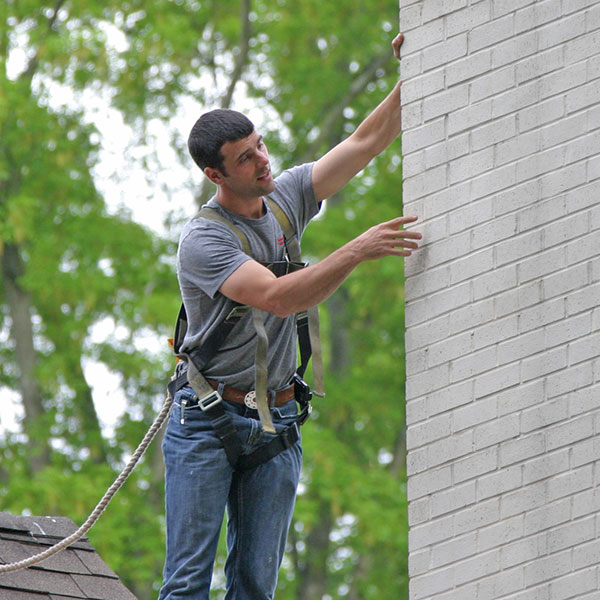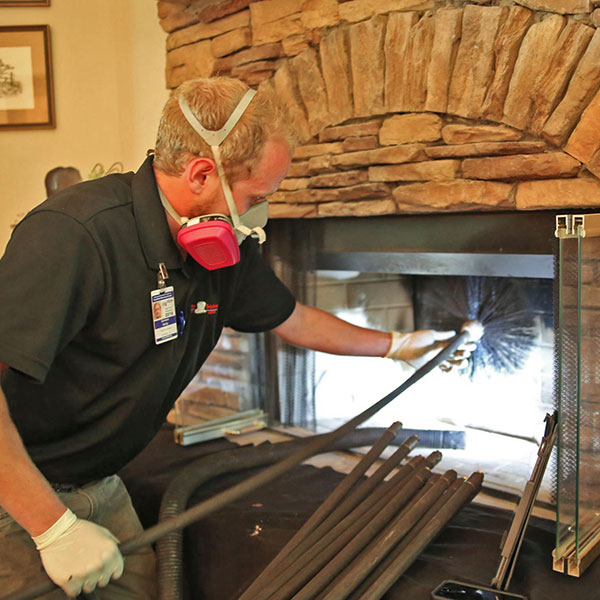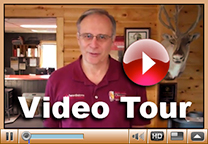Important Chimney and Fireplace Terminology
If you have a fireplace, it can be helpful to become familiar with basic chimney and fireplace terminology. Regular chimney maintenance is needed but is often neglected. When you know the various components of a chimney system, it could enhance your understanding of various hazards that can arise.
 Ash Dump – At the bottom of most fireplaces, the opening that leads to an ashpit.
Ash Dump – At the bottom of most fireplaces, the opening that leads to an ashpit.
Carbon Monoxide – Toxic byproducts of incomplete combustion include deadly carbon monoxide, which is tasteless, odorless, invisible, and symptomless. It is essential to have an operational carbon monoxide detector when using your fireplace.
Chimney Chase – If you have metal flue pipes, the chase is the structure around it above the roof line. Chimney chase exteriors are usually built with siding, stucco, or brick or stone veneer.
Chimney – Typically a vertical passage that conveys combustion gases from a heating appliance such as a fireplace to the out-of-doors.
Chimney (or Flue) Cap – At the top of the flue, a cap that helps to prevent rain, sleet, and snow from entering the flue. With steel mesh, a flue cap can also keep out animals and operate as a spark guard.
Chimney Cleaning (Sweeping) – Professional chimney sweeps use tools of the trade to remove creosote, soot, and any other debris that might be in the chimney. Creosote is highly flammable and, if not removed, increases the chances of a hazardous chimney fire and can obstruct the chimney if chimney cleaning is neglected for too long.
Chimney Inspection – Experts in all leading fire safety organizations in the U.S. agree that an annual chimney inspection is important for safety, no matter how seldom or frequently the chimney is used.
Chimney Liner – The chimney liner or flue liner is the part of the chimney through which combustion gases travel on the way from the firebox to the out-of-doors. If the chimney liner is damaged to any extent, the home is exposed to the potential for a house fire due to pyrolysis and to a deadly carbon monoxide leak into the home.
Crown – The top surface of a masonry chimney is the chimney crown. Its function is to help prevent moisture intrusion into masonry. Moisture intrusion results in the destruction of the masonry and the need for a chimney rebuild.
 Damper – The damper is the device that should be opened before starting a fire so that combustion gases escape up the chimney and not into the home. Closing the damper when the fireplace is not in use is important to help prevent skyrocketing heating costs.
Damper – The damper is the device that should be opened before starting a fire so that combustion gases escape up the chimney and not into the home. Closing the damper when the fireplace is not in use is important to help prevent skyrocketing heating costs.
Downdraft – A blast of cold air that enters through the top of the chimney and travels into the home. A chimney cap, chimney chase, or outside-mount custom chimney cap can prevent downdrafts.
Firebox – The area where the fire burns in a fireplace or stove.
Firebrick – Firebrick is specially created to withstand extreme heat. The firebrick in the firebox is similar to the chimney lining in that it must be intact to protect combustibles from high temperatures and contain toxic combustion fumes.
Fireplace Inserts – When you have a fireplace insert installed, it is a masonry fireplace upgrade. A fireplace insert fits inside the existing firebox and converts it into a highly efficient heating appliance. Fireplace inserts can be fueled by wood, gas, or pellets.
Flashing – Chimney flashing is the sheet metal at the base of the exterior chimney that forms a watertight connection between the chimney and the roof. Flashing, however, is very prone to rust and leak.
Flue – The passageway inside chimneys that conveys combustion gases to the out-of-doors.
Flue Liner – A flue liner is a required liner inside the flue that serves to protect combustion materials in the home from being exposed to extreme heat, and it also prevents toxic fumes from entering the home.
Hearth – The floor area of a fireplace firebox.
Hearth Extension – The non-combustible floor-level structure that protrudes from the hearth into the room.
Outside-Mount Custom Chimney Cap – The type of flue cover most recommended by chimney experts. An outside-mount custom chimney cap provides a greater level of protection against moisture than flue caps.
Pyrolysis – The process wood and other combustible materials go through as a result of heat application. The chemical alteration can result in sudden ignition of the combustible materials at a much lower temperature than before the process occurred.
Throat – The open area above the fireplace firebox where combustion gases travel up into the chimney and where the fireplace damper assembly is typically located.
Contact the Experts at Chimney Specialists Inc.
If you need to schedule chimney cleaning, a chimney inspection, chimney repair, masonry repair, or any other chimney services, contact our certified experts at Chimney Specialists Inc. In the Highland area, call (608) 929-4887. In and around Dubuque, Iowa, contact Dubuque Fireplace & Patio at (563) 582-5156 today.







